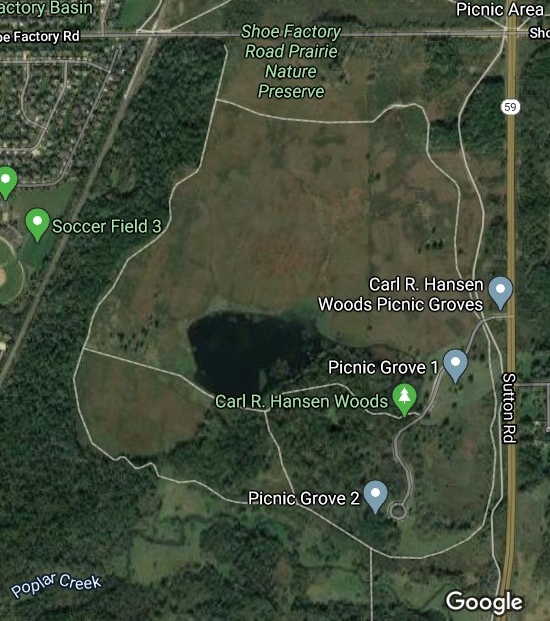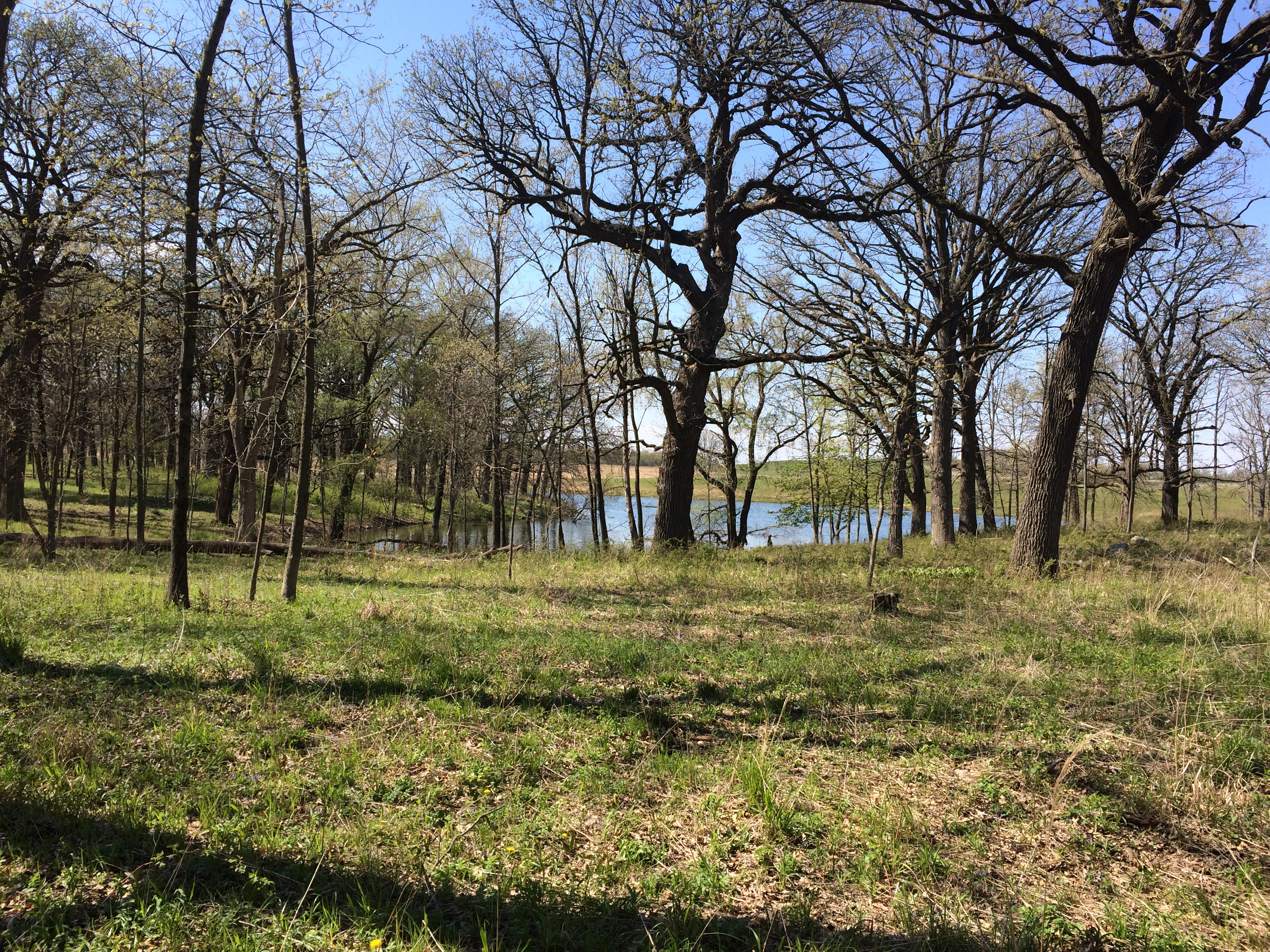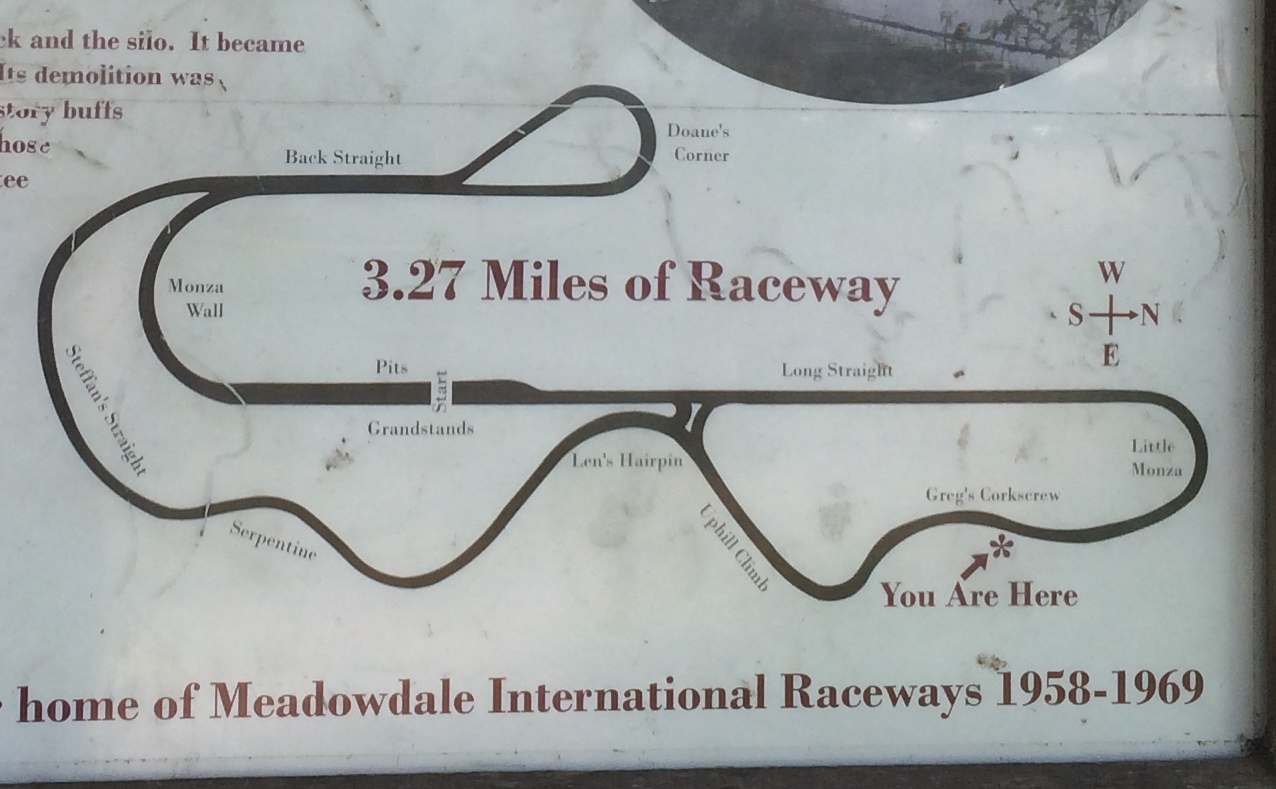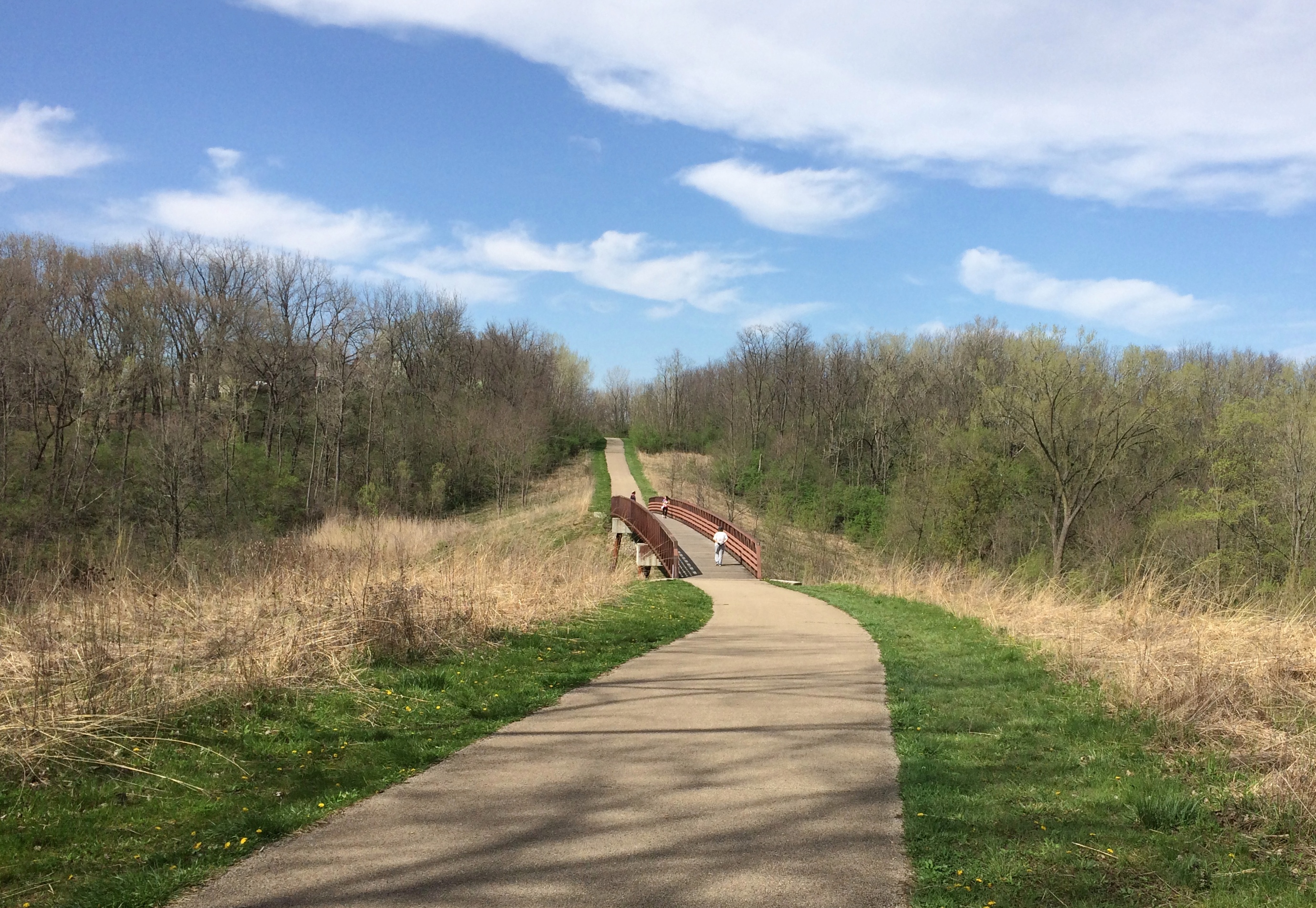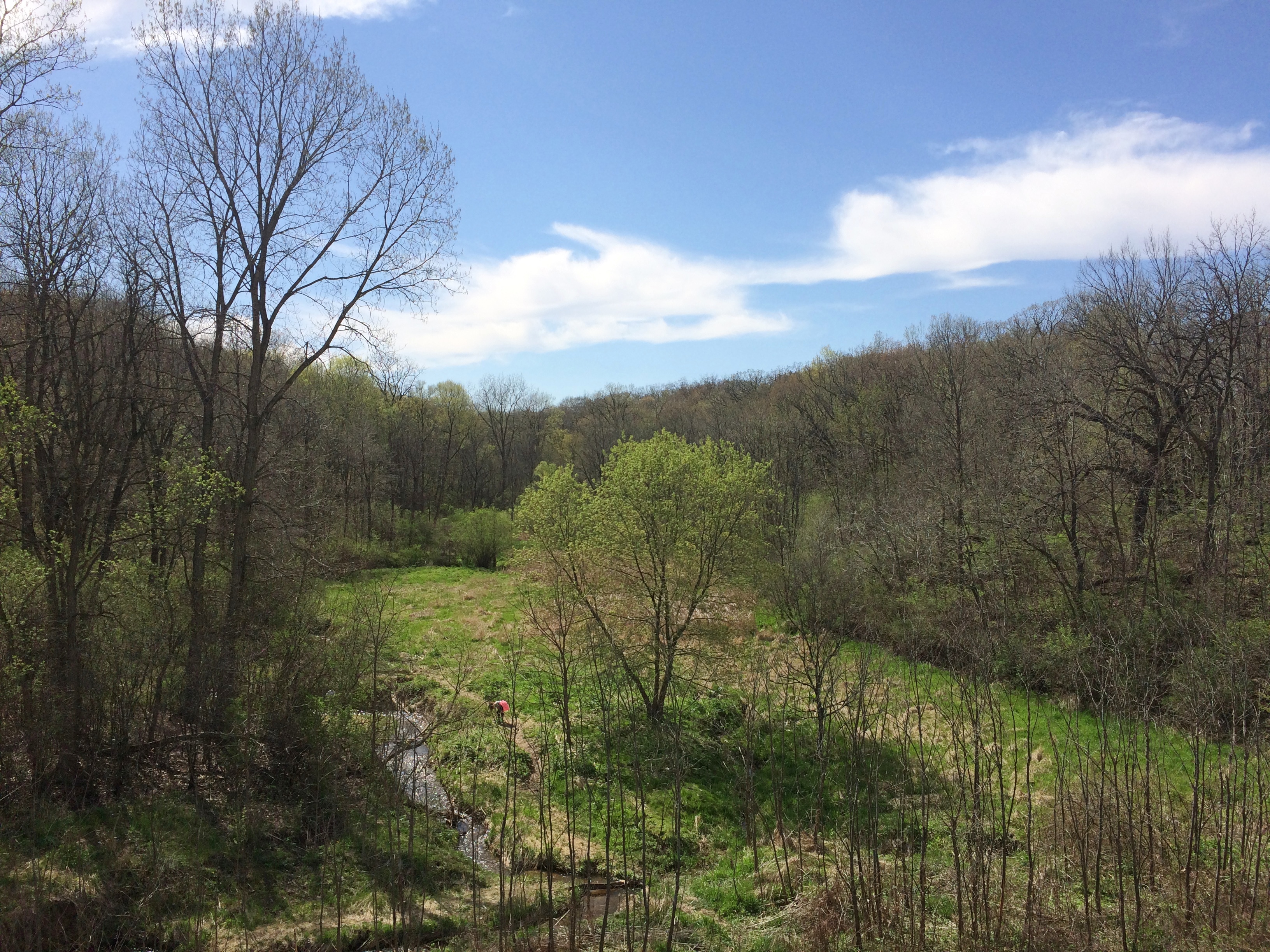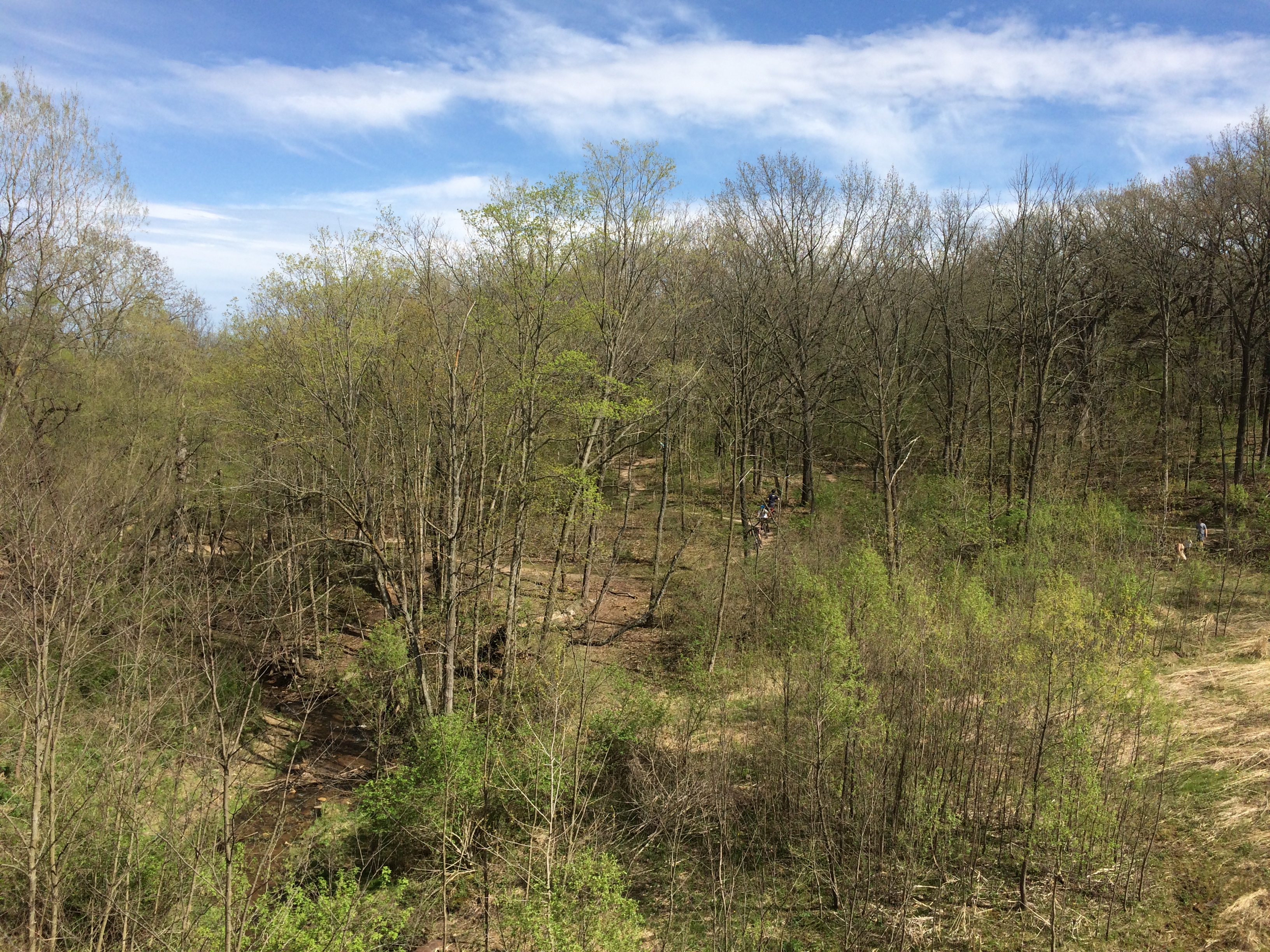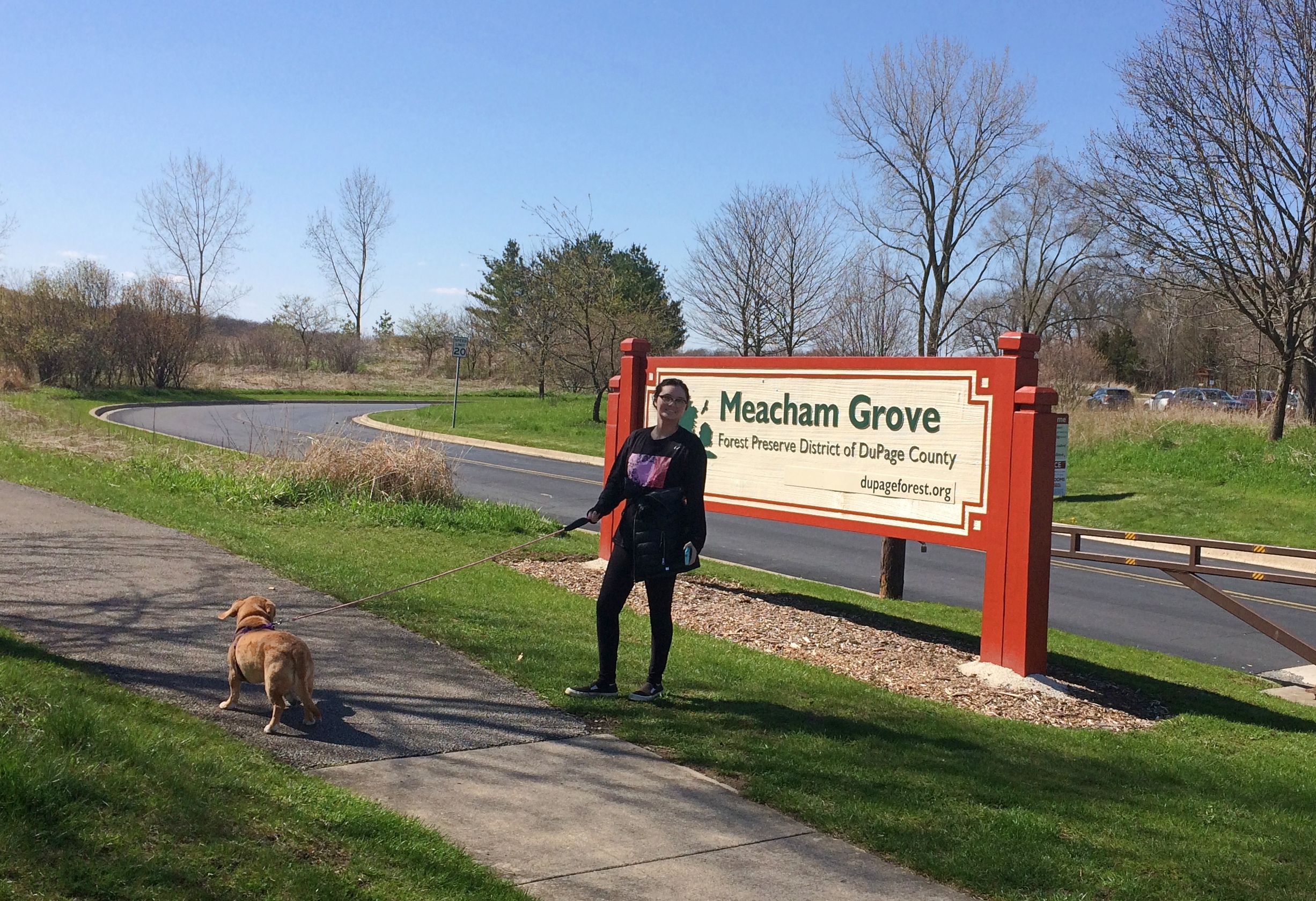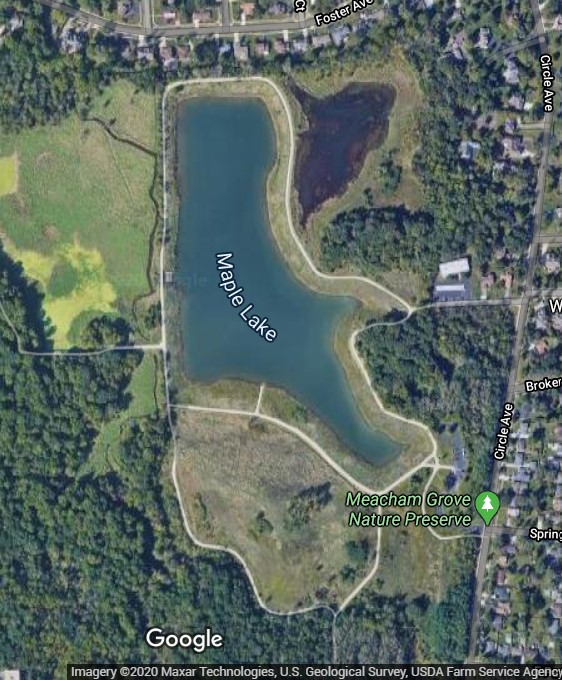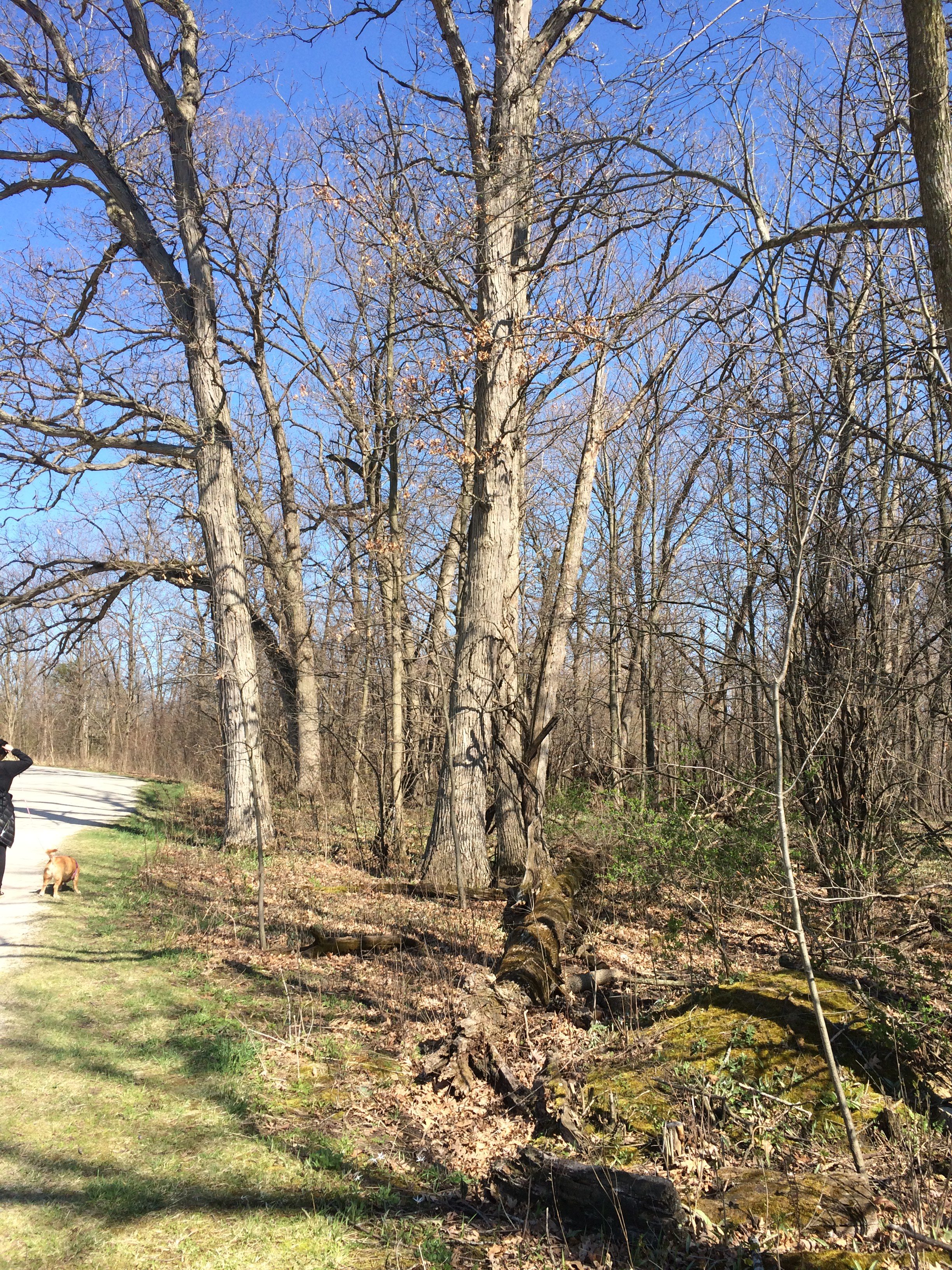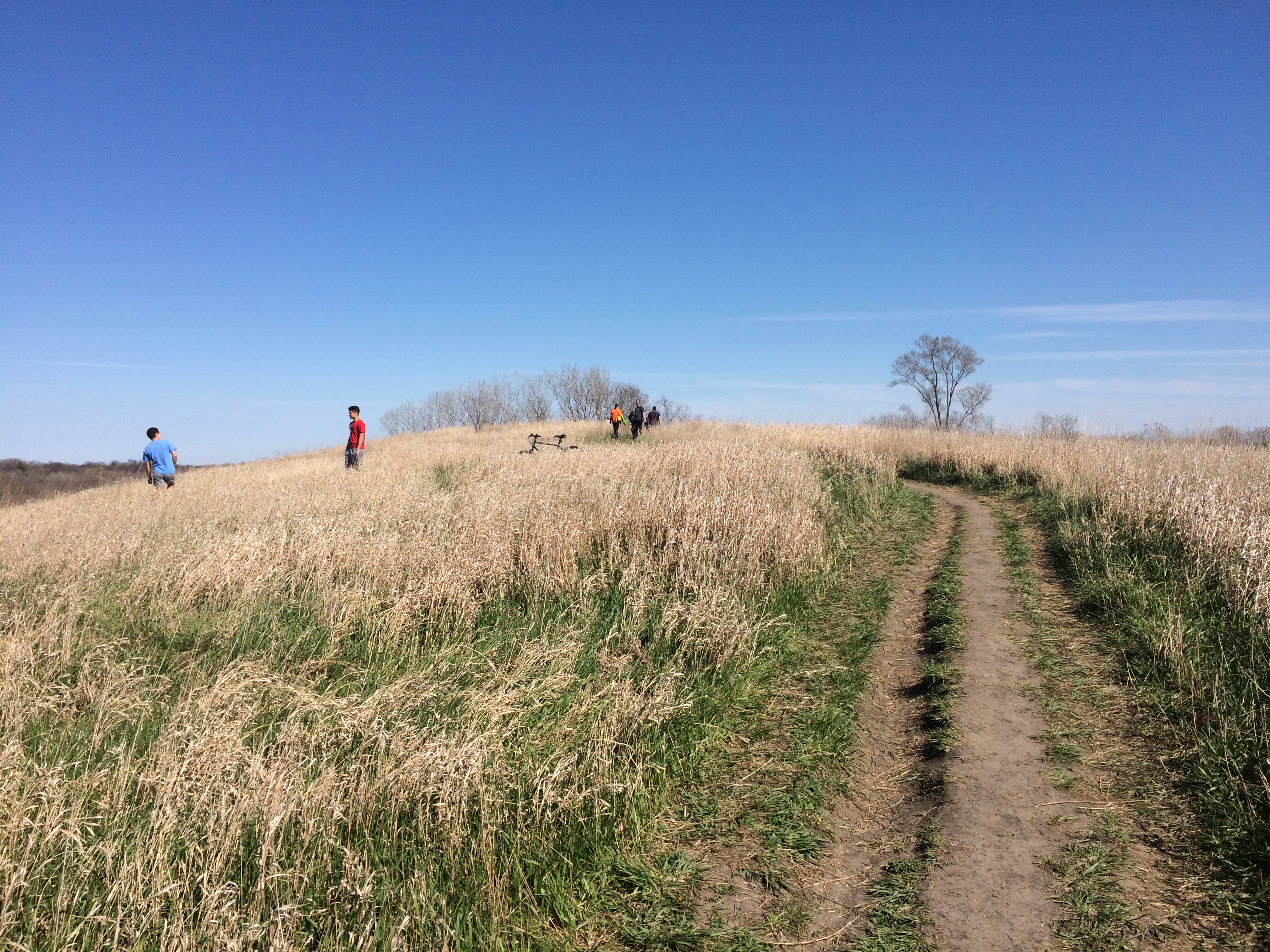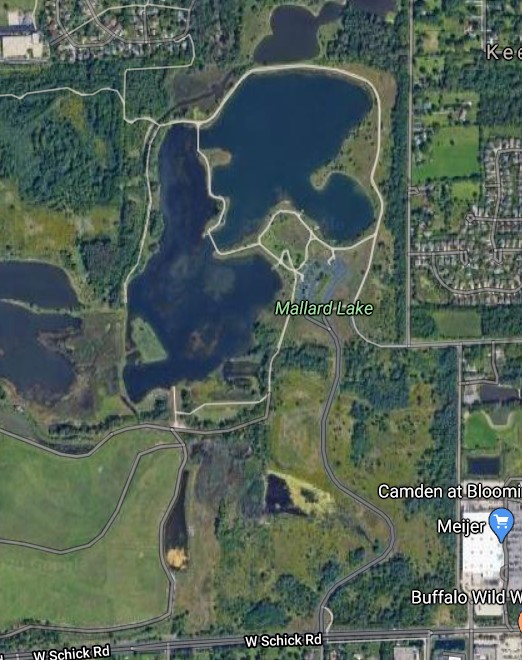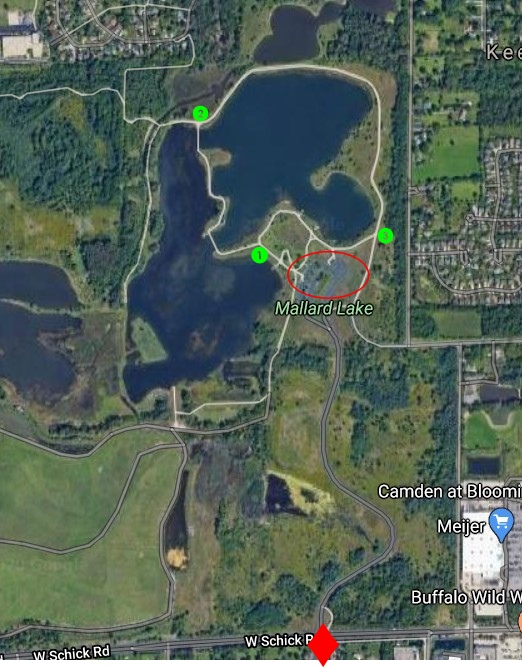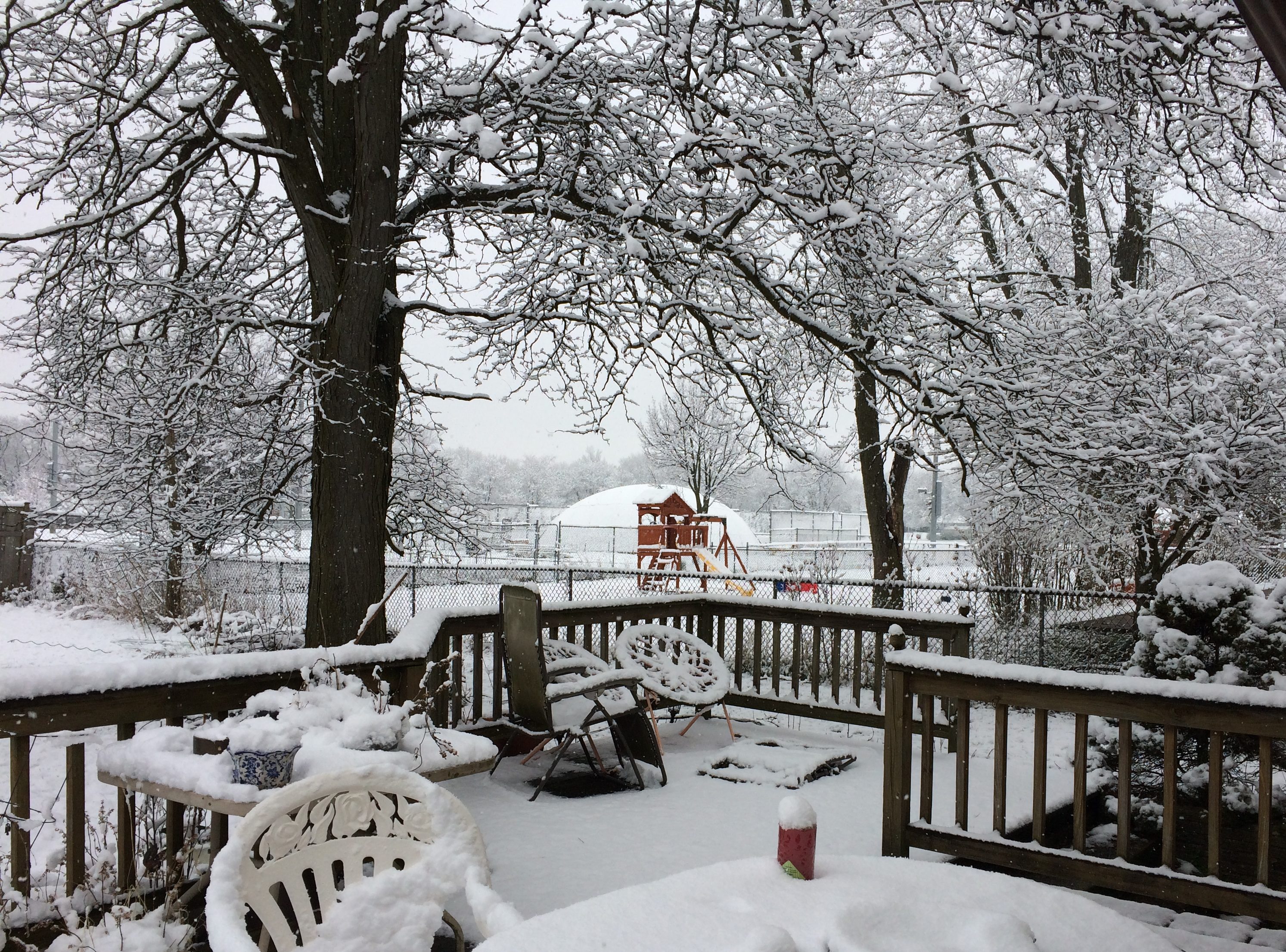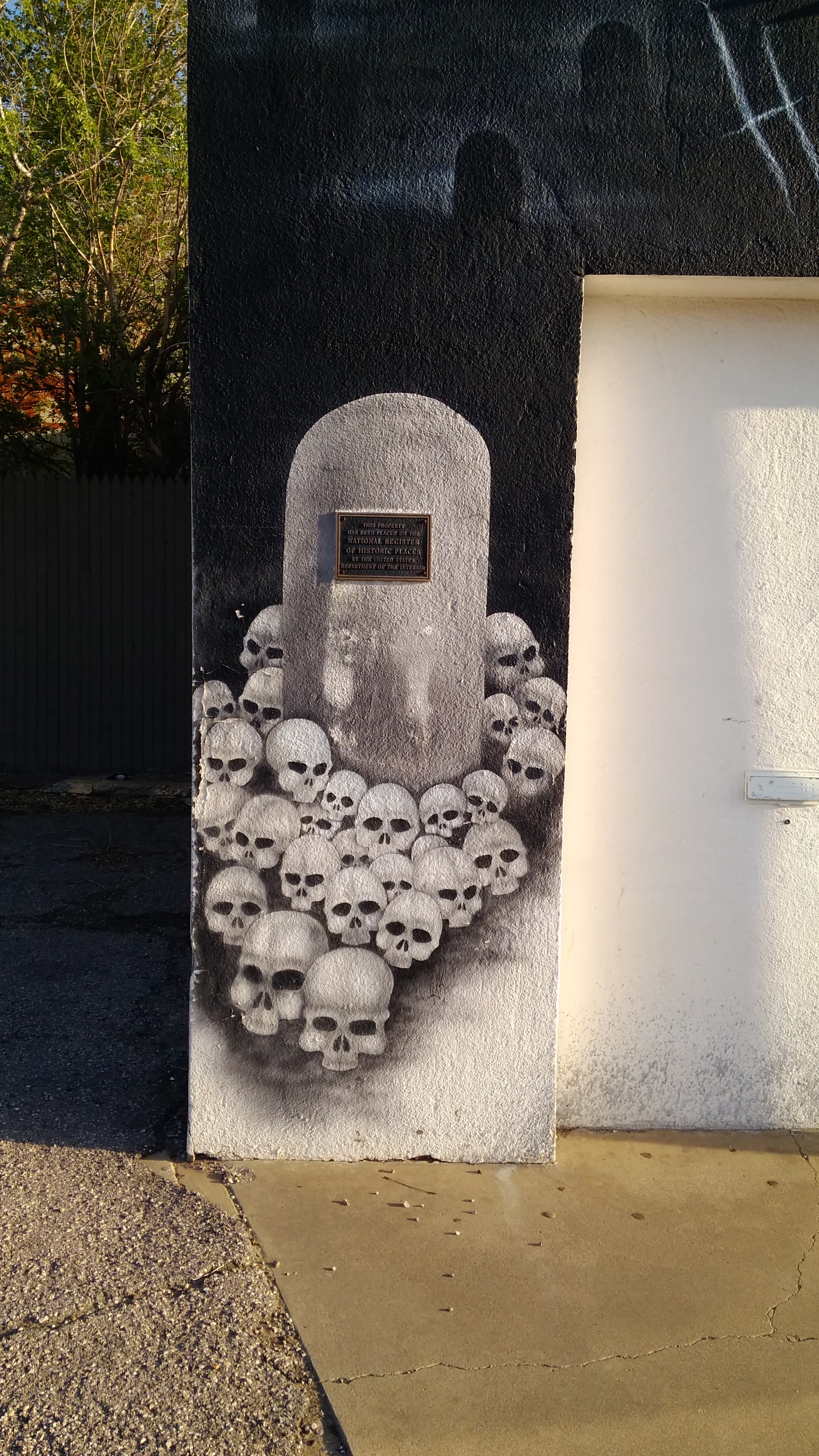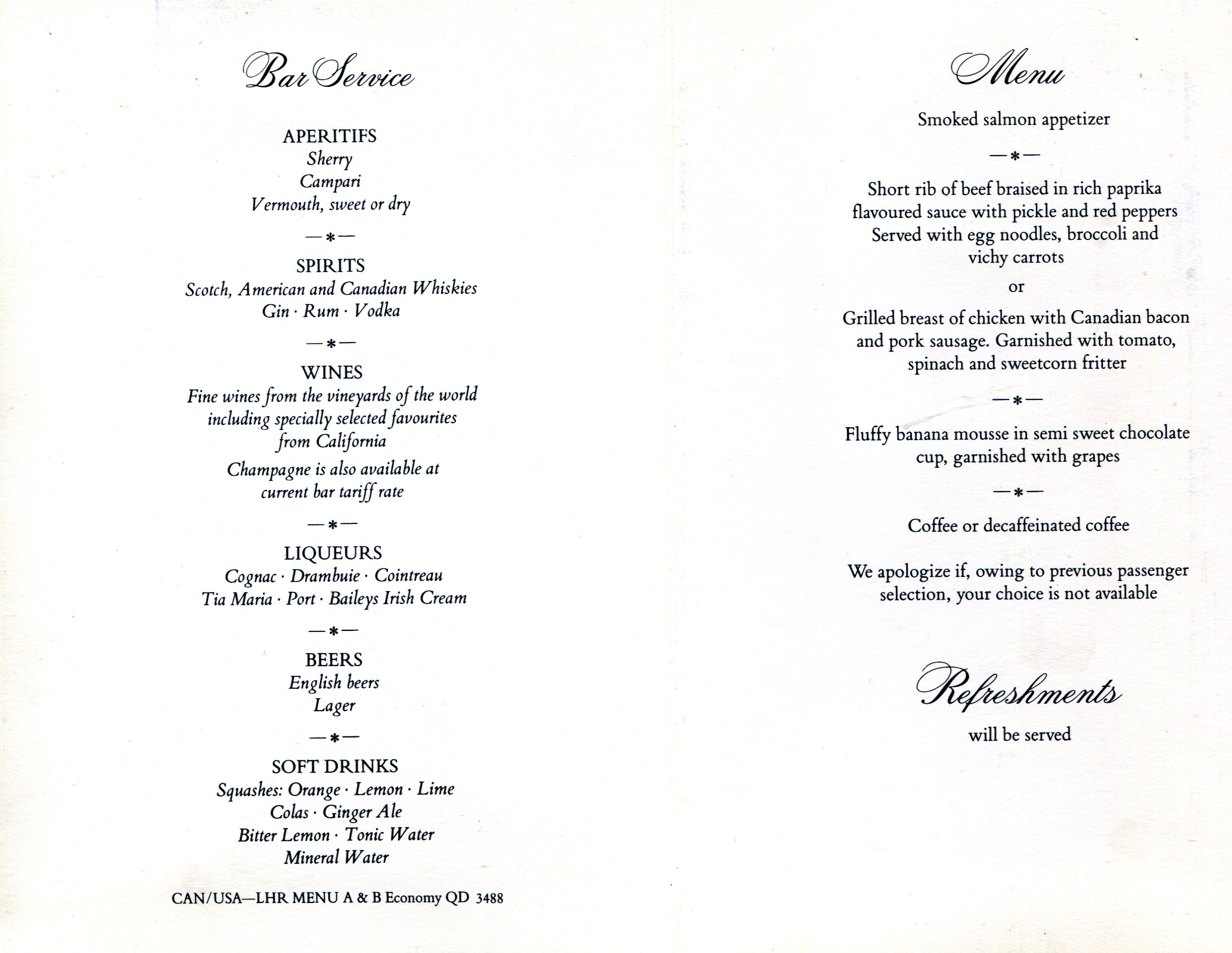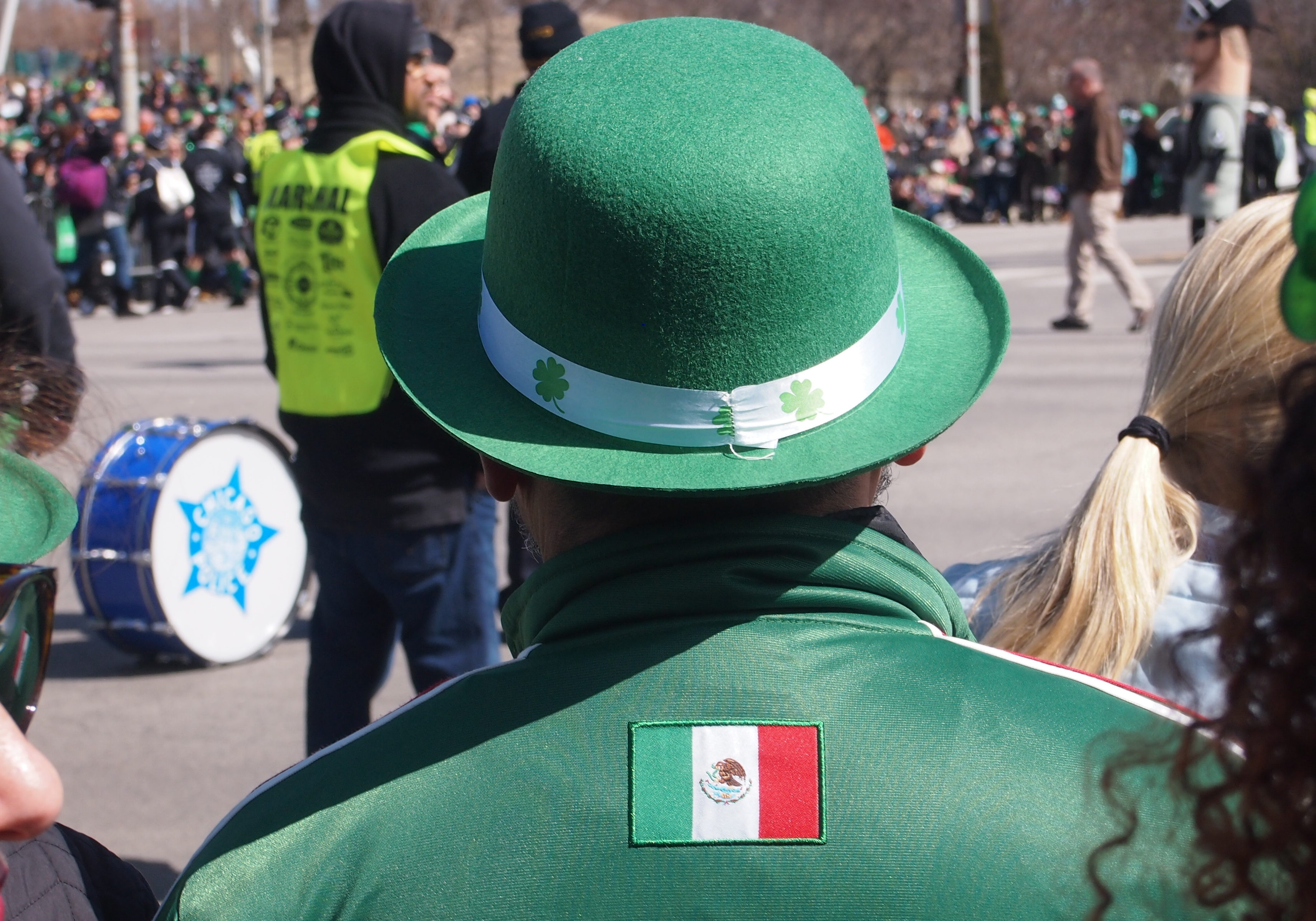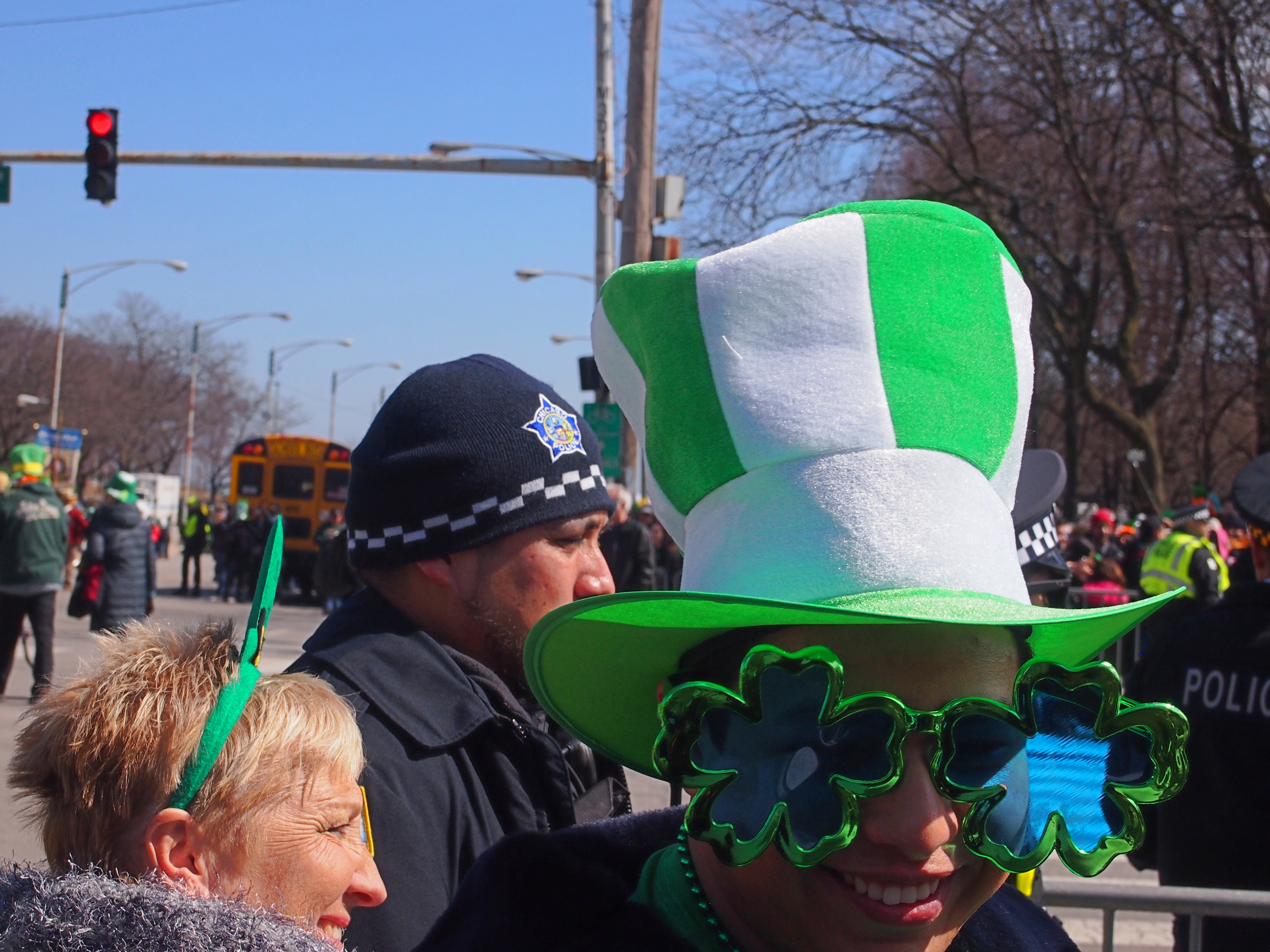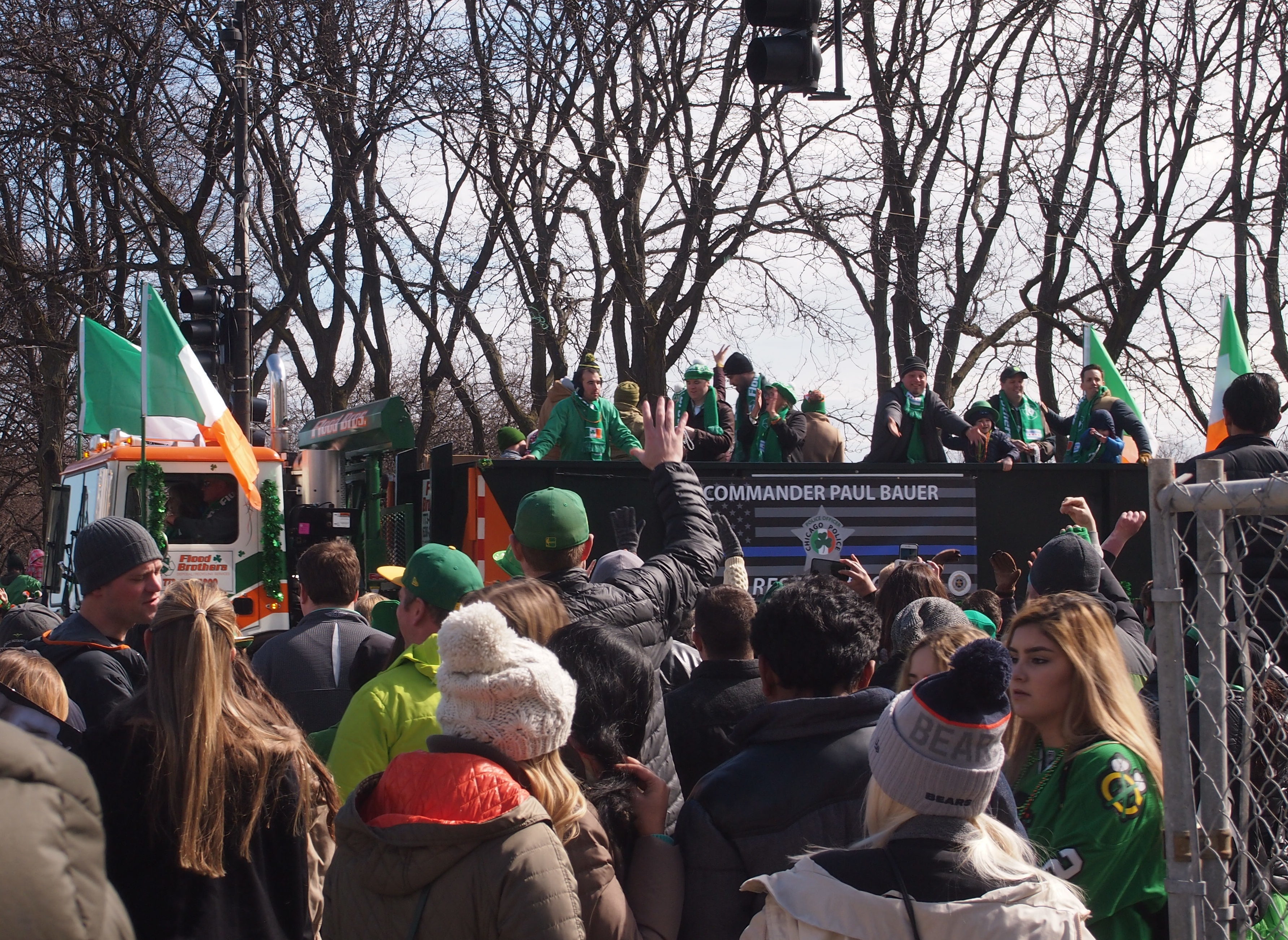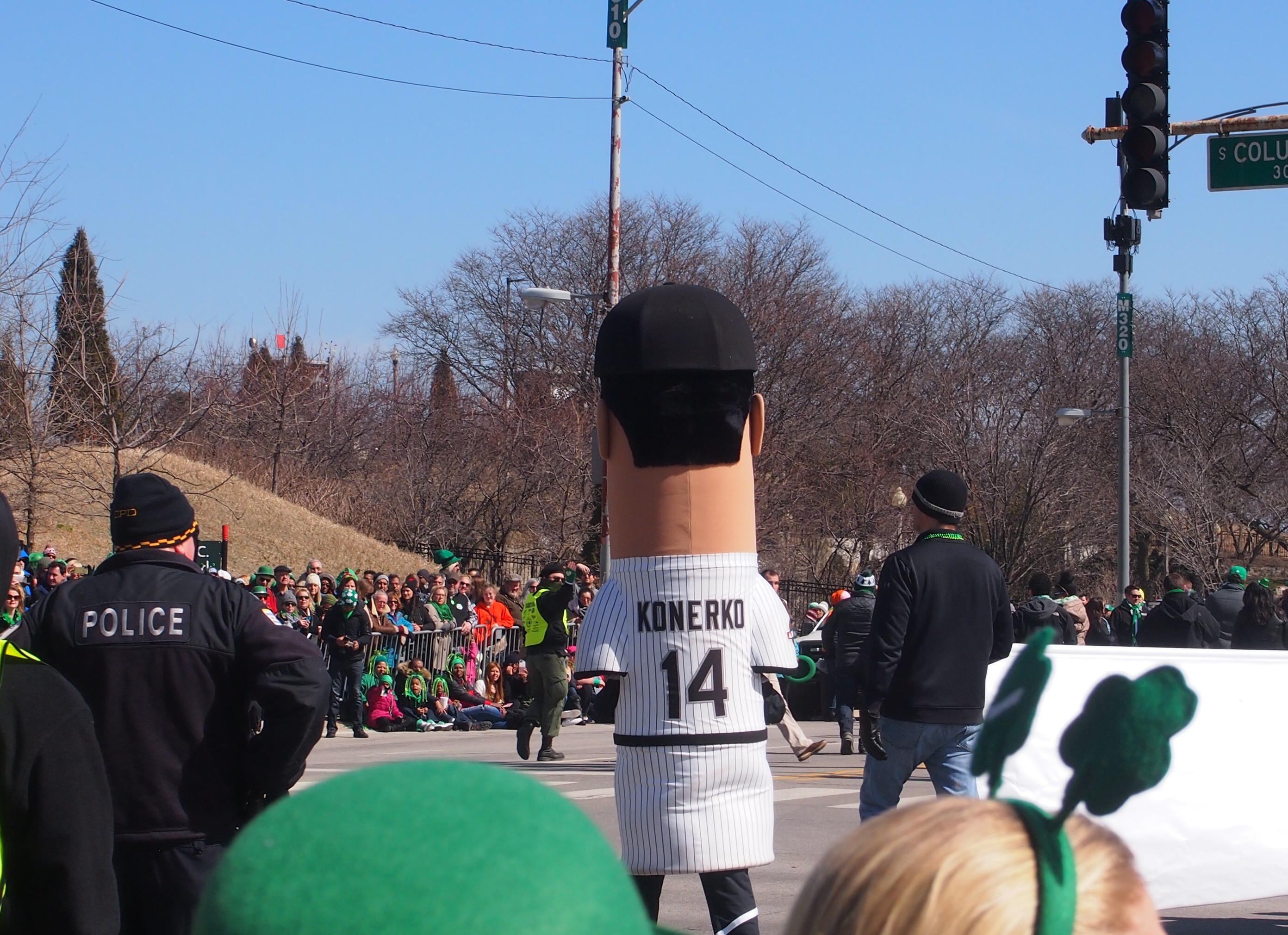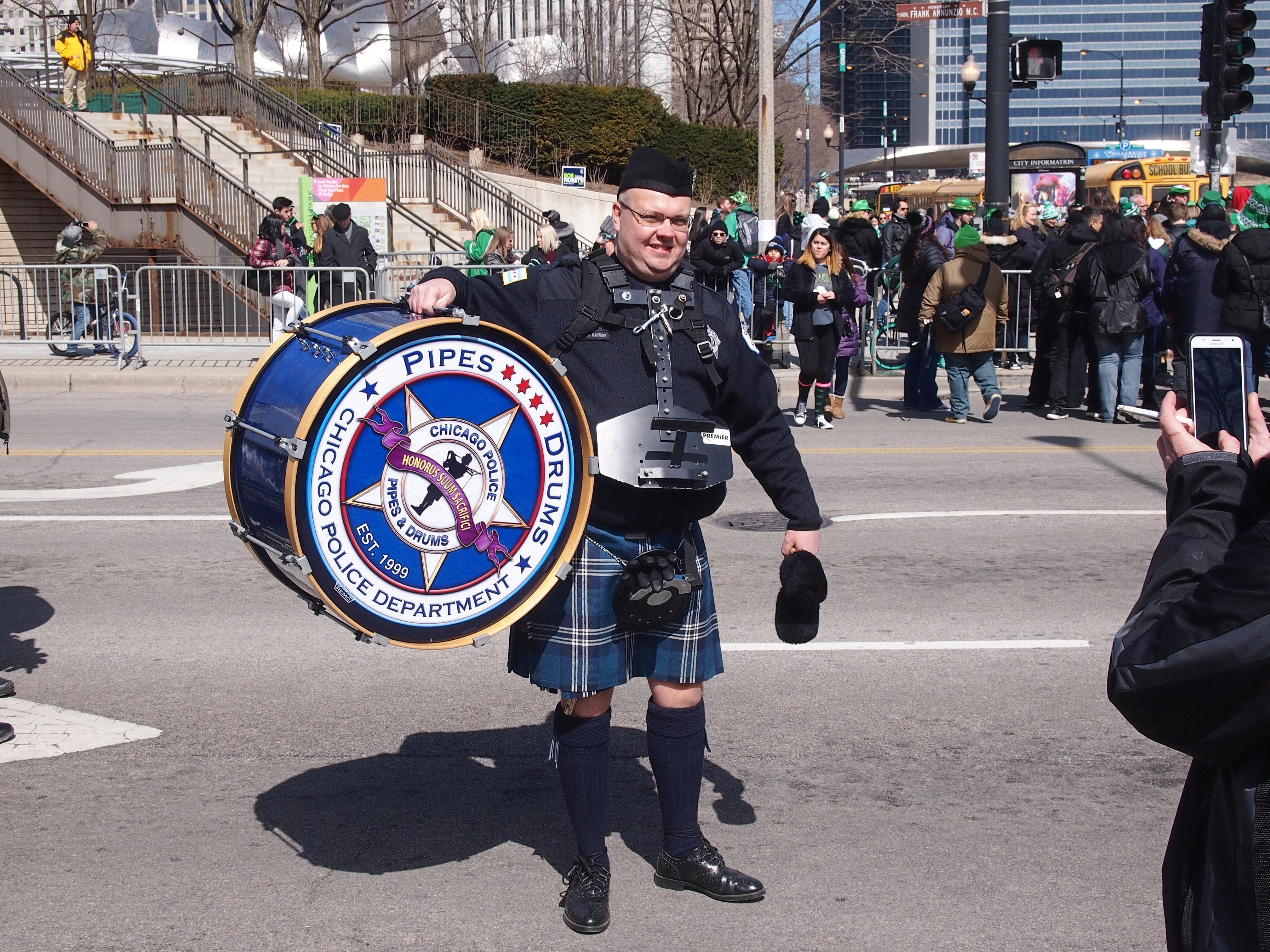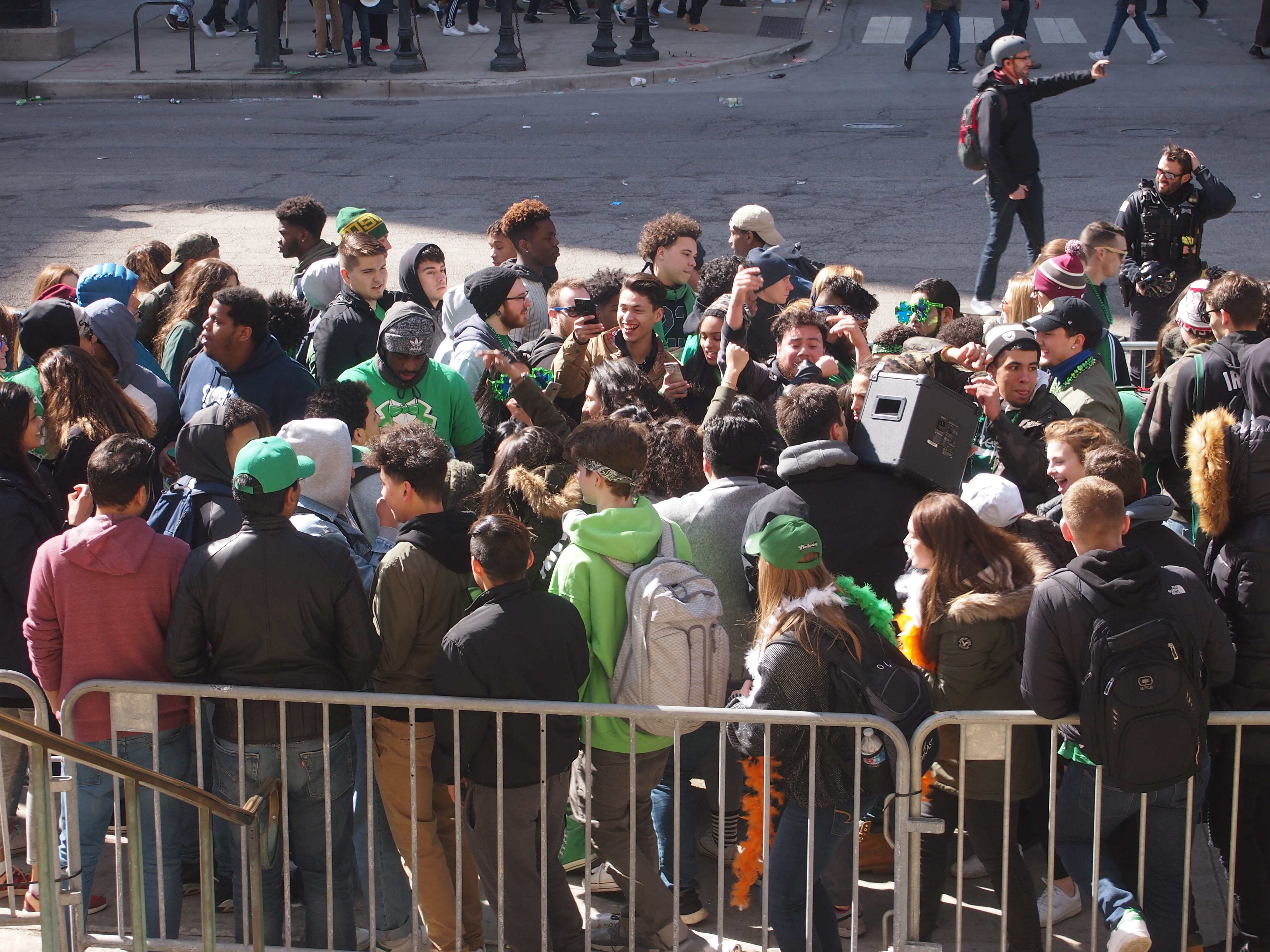Another Easter activity of ours: a long walk. Lots of people can say that. The pandemic has done more for getting people out on the sidewalks than anything I can think of, at least here in a suburb that has sidewalks.
Easter Sunday happened to be warmish this year, especially when compared to Easter Monday. By late in the evening on Monday, it was already down around freezing, headed for a morning low today of 28 F. Bah.
At about noon today, there was snow. At least it didn’t last long and it didn’t stick.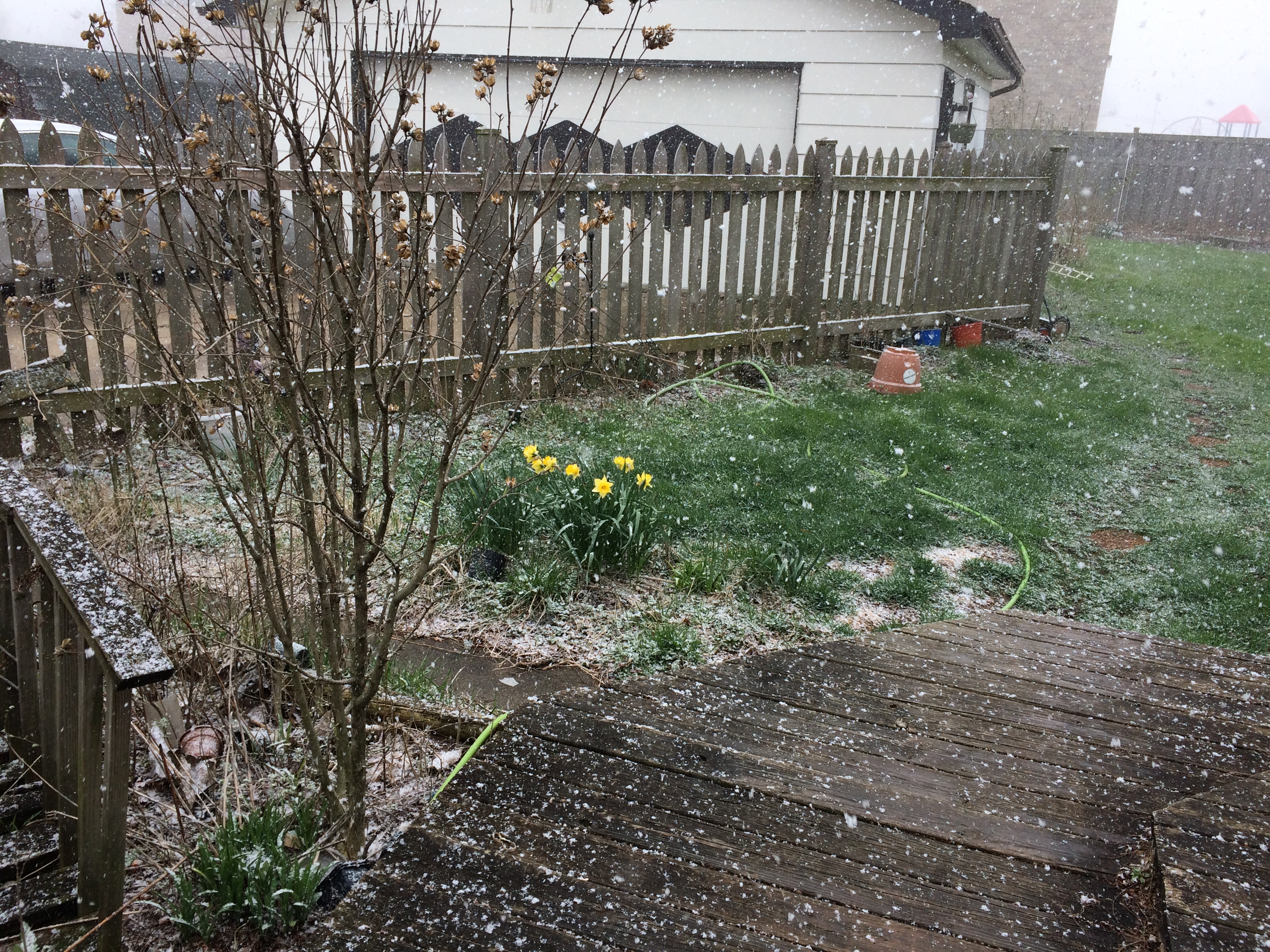
Back to Sunday. In the afternoon, we went to the Arthur L. Janura Forest Preserve, also known as the Poplar Creek Forest Preserve. All of us, including the dog.
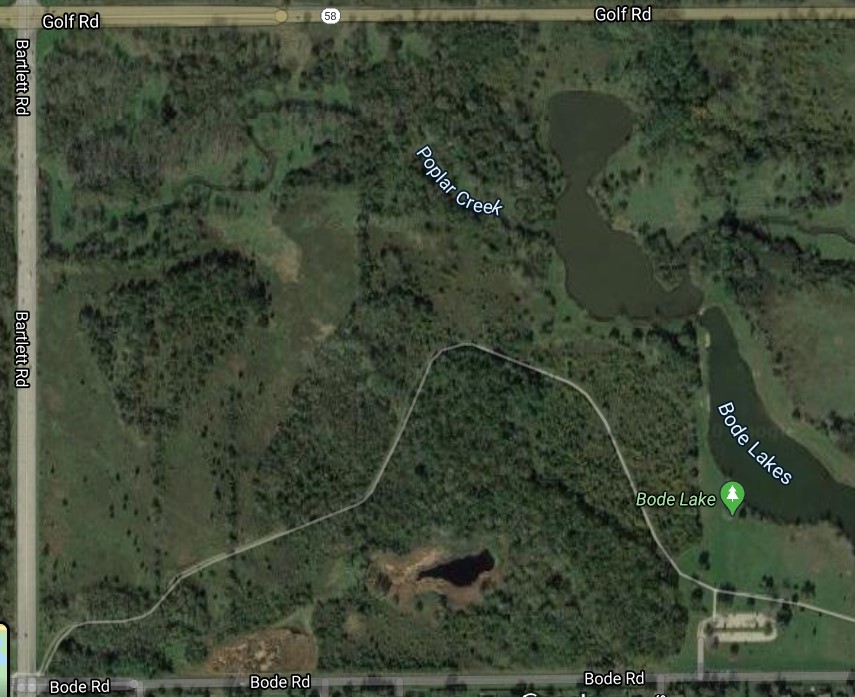 That’s only one section of a much larger property, which is part of the Cook County Forest Preserve District. Fortunately the state hasn’t ordered such places closed, though various events in the district have been cancelled. Such an order would be nonsensical, considering how much social distancing you can do in such a large expanse, but some jurisdictions don’t seem to have much sense.
That’s only one section of a much larger property, which is part of the Cook County Forest Preserve District. Fortunately the state hasn’t ordered such places closed, though various events in the district have been cancelled. Such an order would be nonsensical, considering how much social distancing you can do in such a large expanse, but some jurisdictions don’t seem to have much sense.
A modified version of the map.
We walked from the parking lot (circled in red) along the paved path (in white) until we got roughly to where I’ve put a red octagon. From there, we headed overland to the banks of Poplar Creek (the next octagon) and then followed the creek along its curve, reaching roughly the position of the third octagon. We returned more or less the same way. Looks long, but I don’t think the walk was more than a mile and a half round trip.
There on Poplar Creek, it’s hard to believe you’re in a metro area of 9 million or so — except for the traffic on Golf Road. Not visible, but audible, even if the sound is a little diminished in these pandemic days. The creek, fairly full from spring rain, gurgled along.
Poplar Creek is a tributary, ultimately, of the Fox River, which feeds the Illinois River. That in turn flows to the Mississippi. So the water we saw was destined, mostly, for that mighty river and the far-away Gulf.
The route was muddy and sometimes strewn with fallen branches and rocks. The grass and weeds and other foot-level plants are greening nicely, while the trees and bushes are getting their start, but haven’t caught up yet.
I think dog thoroughly enjoyed her walk, tramping through the mud, sniffing everything she could, and chewing on blades of grass when we paused. We didn’t have such a bad time either, momentarily away from shelter in place.
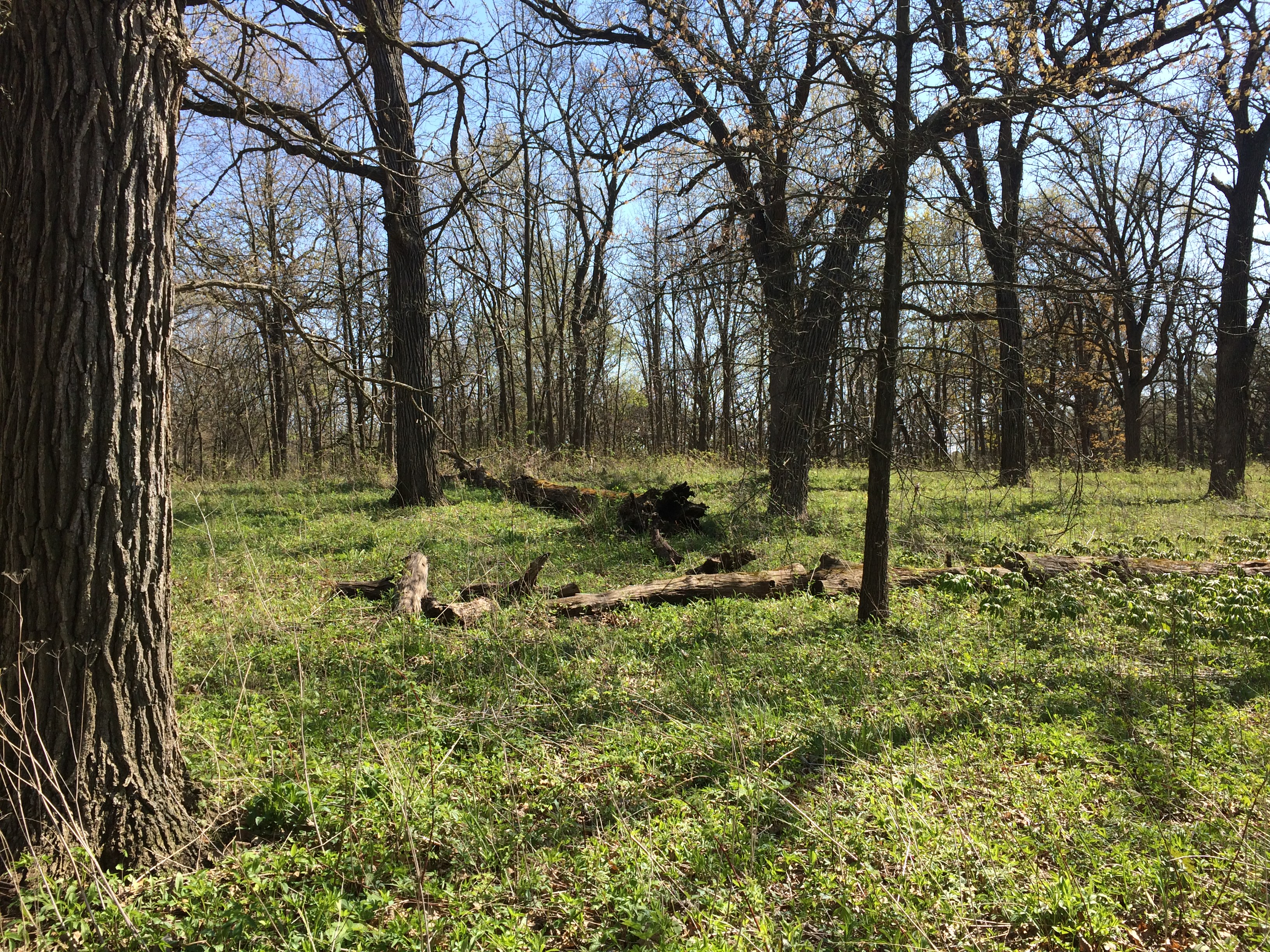
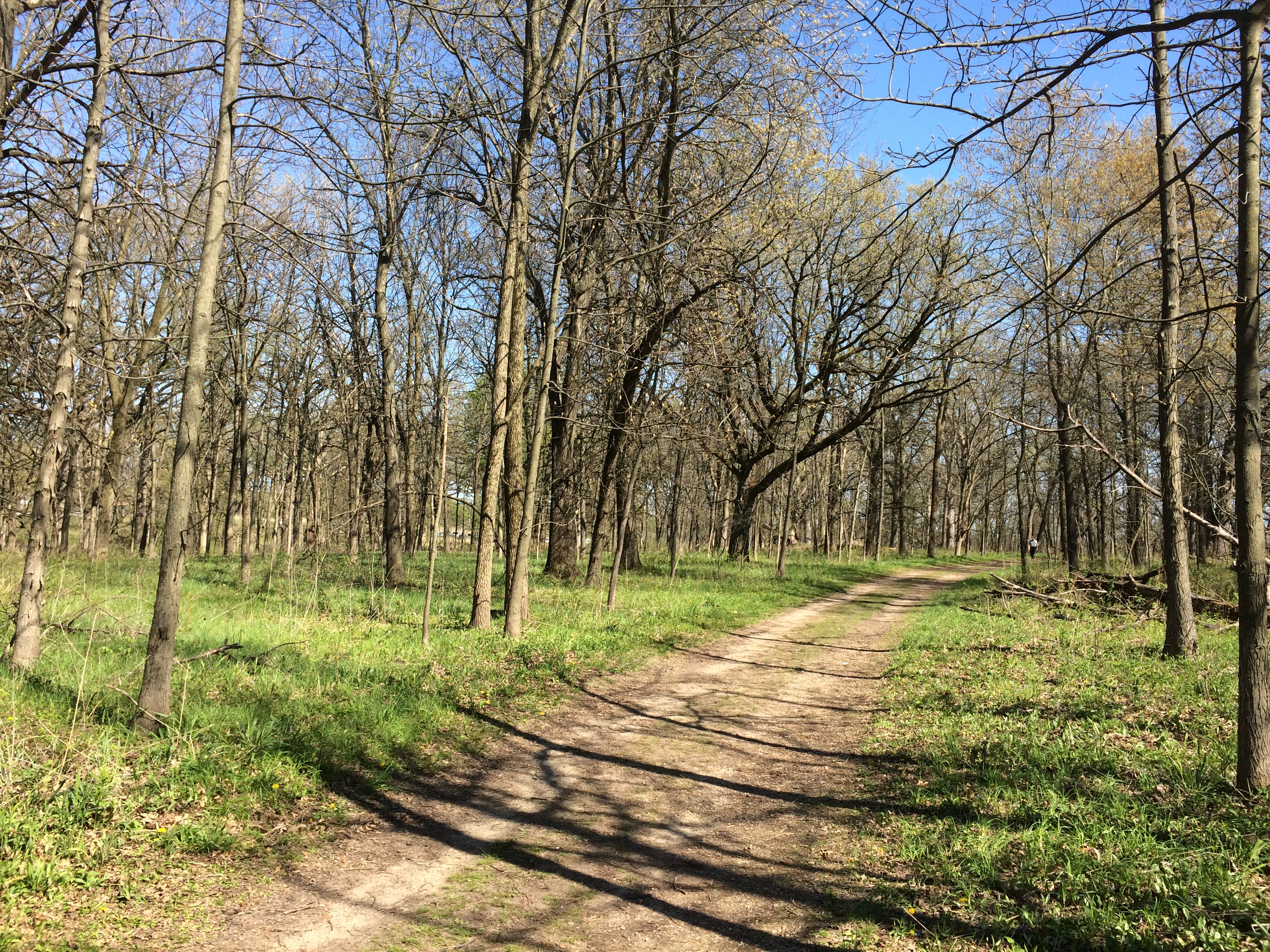 I checked on the map, but the body of water in the area doesn’t seem to have a name.
I checked on the map, but the body of water in the area doesn’t seem to have a name.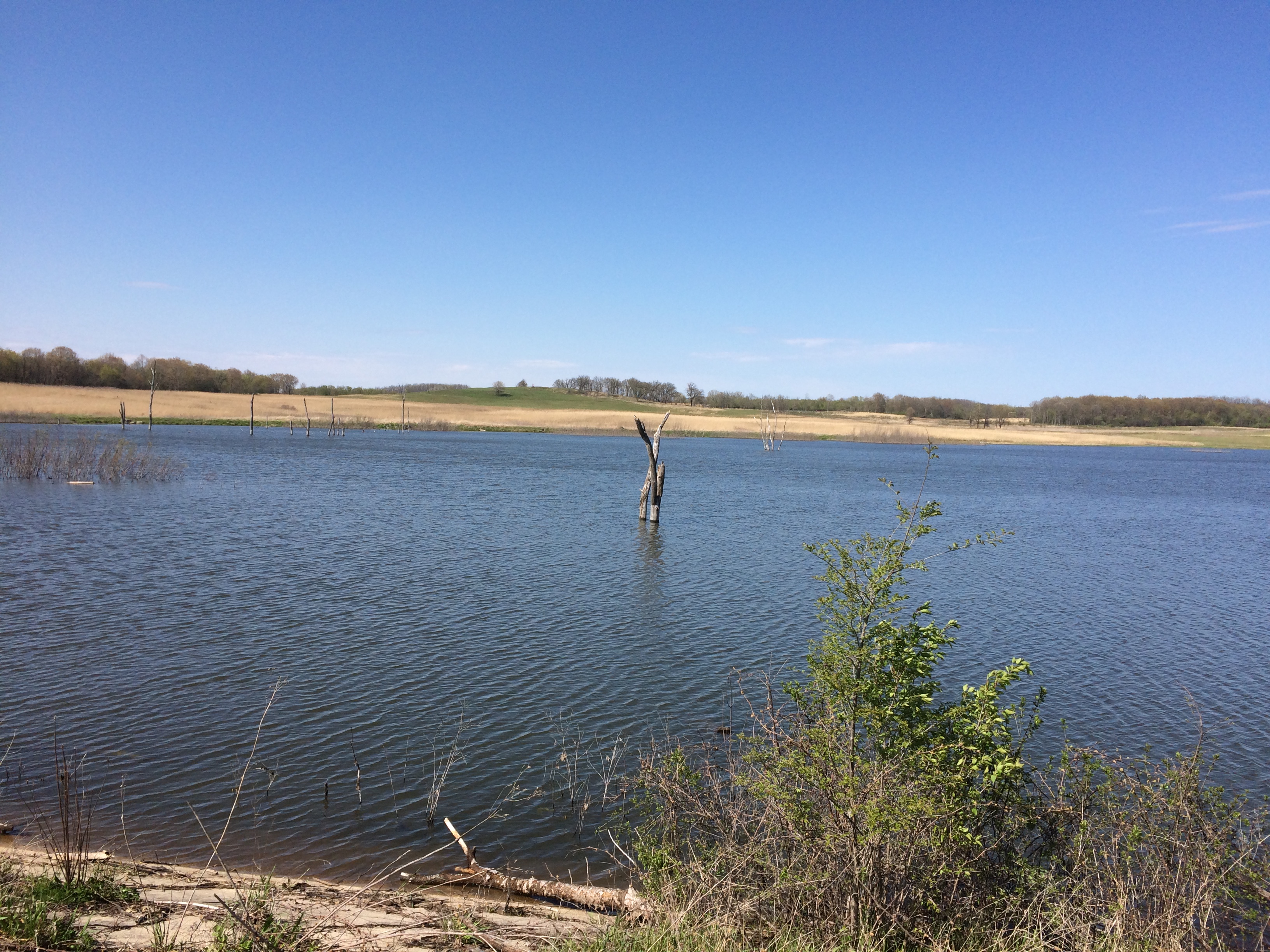 Elsewhere in the woods, we walked along a creeklet, little more than a damp ditch, but I was pretty sure it flows into Poplar after rain. A small bit of the Mississippi Watershed, one of countless minor waters that combine into something very large, was right under our feet.
Elsewhere in the woods, we walked along a creeklet, little more than a damp ditch, but I was pretty sure it flows into Poplar after rain. A small bit of the Mississippi Watershed, one of countless minor waters that combine into something very large, was right under our feet.
